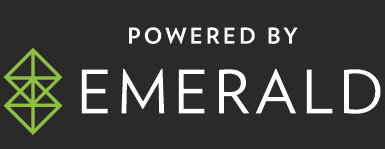By Alia J. Daniels, Co-Founder and COO, Revry
Think you have an accurate read on your colleagues and your direct reports — and their direct reports? You may be surprised: even the most conscientious, emotionally intelligent leaders have blind spots when it comes to truly understanding everyone on their team: their preferred communication styles, how they give and receive feedback, and what they need from you to do their best work.
It’s hard to glean this kind of intel during the hectic day-to-day at any workplace, but it’s especially challenging in remote or hybrid setups, where many interactions are virtual and ripe for misreads across huddles, one-on-ones, Slacks or emails.
One highly recommended solution: Conducting a staffwide personality test. A popular modern-day option is the Enneagram, an extensive questionnaire that places respondents across nine different personality types based on core motivations, fears, and desires, all shaping their daily interactions and worldview.
Staffwide personality tests aren’t just novel ways to deepen bonds and mutual understanding with your employees — they’re a team exercise guaranteed to make you a better leader. Here are five tips to pull this off effectively:
Make It an Event — and a Fun One!
To build staff excitement around the test, instruct your team to complete the chosen questionnaire by an established deadline. As any casual Buzzfeed reader knows, most personality test results can be customized with pop culture references: think movie characters or pop stars (“Are you a Taylor Swift or a Beyonce?”). Try using a test featuring this kind of template. Set aside time on the team calendar to reveal and discuss the results, and ensure consent from all team members to have their personal results shared. If possible, consider hosting this reveal during a staff retreat, offsite, or special event. But even if done via Zoom, plan to share all participants’ test results collectively as a group. Then, assign staffers to breakout sessions, where folks can dive deeper into what the results mean to them.
Keep an Open Mind
The last thing you’d want to do before a staffwide exercise like this one is to assume you know your team members inside and out. Throw all preconceived notions — who you think is an introvert, who’s deeply analytical, who’s wildly artistic — out the window. This process is built to look at everything from a new perspective. Instead of assumptions, prepare yourself to be surprised by the findings. This gives your teammates the respect and acceptance they deserve — and, crucially, forces you to challenge your conventional wisdom, which itself is an important exercise in personal growth.
Pay Extra Attention to Your Direct Reports’ Results
If you’re reading this, chances are you’re not simply a leader, but a
manager, too. If you’re looking to improve rapport with your direct reports for better collaboration and productivity (who isn’t?), it’s crucial that you understand their preferred communication styles. How do they best receive feedback, especially if it’s negative? How can they feel comfortable airing their own professional needs and grievances? By closely studying the results of their personality tests, you can identify takeaways to evolve the daily dialogues with your closest team members.
Carefully Digest Your Own Results
Look at the person in the mirror: it’s possible there will be some surprises in your own personality test results. Use this as a moment of honest self-reflection. What are some of your own weaknesses as a communicator? What’s holding you back from leading more effectively in your one-on-one interactions and team settings? What are your strengths and assets that you can amplify to be even better?
Implement the Findings Into Daily Practice
Now comes the hard part: As engaging and illuminating as this process can be, it’s crucial to not let this experience become a quickly forgotten memory. Armed with your full team’s test results and all of the surprising conversations that flowed out of them, think about how this can change how you conduct weekly status reports, brainstorms, staff reviews, even Slack and Zoom etiquette. This presents an opportunity to evolve your company culture for the better, and to effect policy change. Keep the conversation going.
The Bottom Line:
Most companies have been operating business-as-usual since 2020, even though the pandemic permanently upended how many of us work and interact with one another. Five years later, it’s crucial that we continue to think critically about how we work, communicate, and lead. If you want more efficiency, productivity and staff retention, remote or otherwise, focus on integrating more humanity into everyone’s 9-to-5 and expanding your empathy as a leader. It all begins with intentional, collective exercises like this one, designed to enact meaningful change and growth, from the bottom up.








